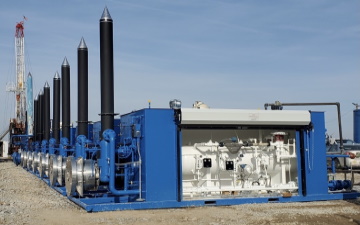The ideal situation for any project with diverse technology needs is a single source for all products. If that single source can also install, support and service, even better.
The complexity of the project amplifies the need for simplification. When time is of the essence, and safety and precision are paramount, the stakes are even higher. Single source specification and integration is very beneficial in well pad automation. By aligning with a main automation contractor, the well pad operator will experience the benefits of…
- Installation of systems and solutions, not products
- Reduced timelines by minimizing contractor coordination
- Enhanced accountability
- Improved installation and operation through integrated solutions
With the selection of a MAC, it is important to define and identify contractor expertise that will best match your project requirements. The well pad automation contractor must be experienced in multiple disciplines including measurement, control, software, communication and power. This delivers the necessary product expertise and the ability to integrate these solutions. Regional knowledge is also valuable in the oil and gas industry as each shale play geology poses unique challenges. The formation of each shale play differs and can influence the surface equipment and therefore the implementation and operation of an automation system. A vendor not familiar with the shale play is at a disadvantage. That challenge can be eliminated with the selection of a main automation contractor with the right experience.
The benefits continue post-installation as the contractor’s extensive knowledge of both the technology and the installation results in seamless support and service. All service needs from on-site maintenance to software updates can be managed by the same team. This fully integrated approach, from the initial design and specification to installation and service, improves well pad performance, safety and operating costs.
In developing a well pad automation strategy, careful consideration should be given to avoiding mixing critical components of well pad monitoring, measurement and control from different manufacturers. Some consequences of mixing manufacturers include mismatched equipment that does not integrate well; nonconformance to measurement standards; and increased complexity. These will all hinder well pad automation and reliability.
Why piece together a critical project when you have the option of a complete solution from one provider with the benefits of ongoing service and support?

